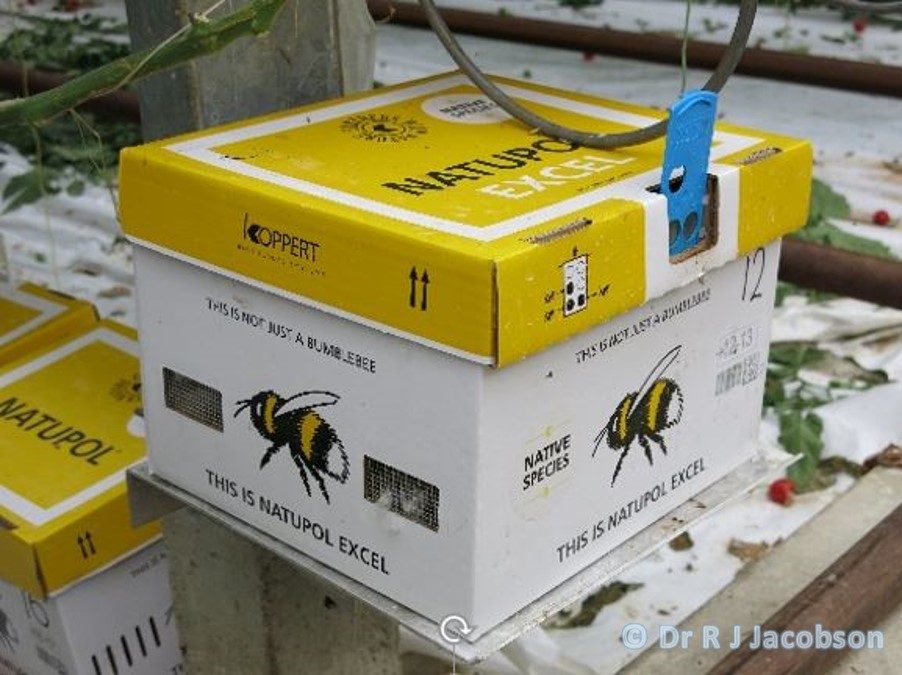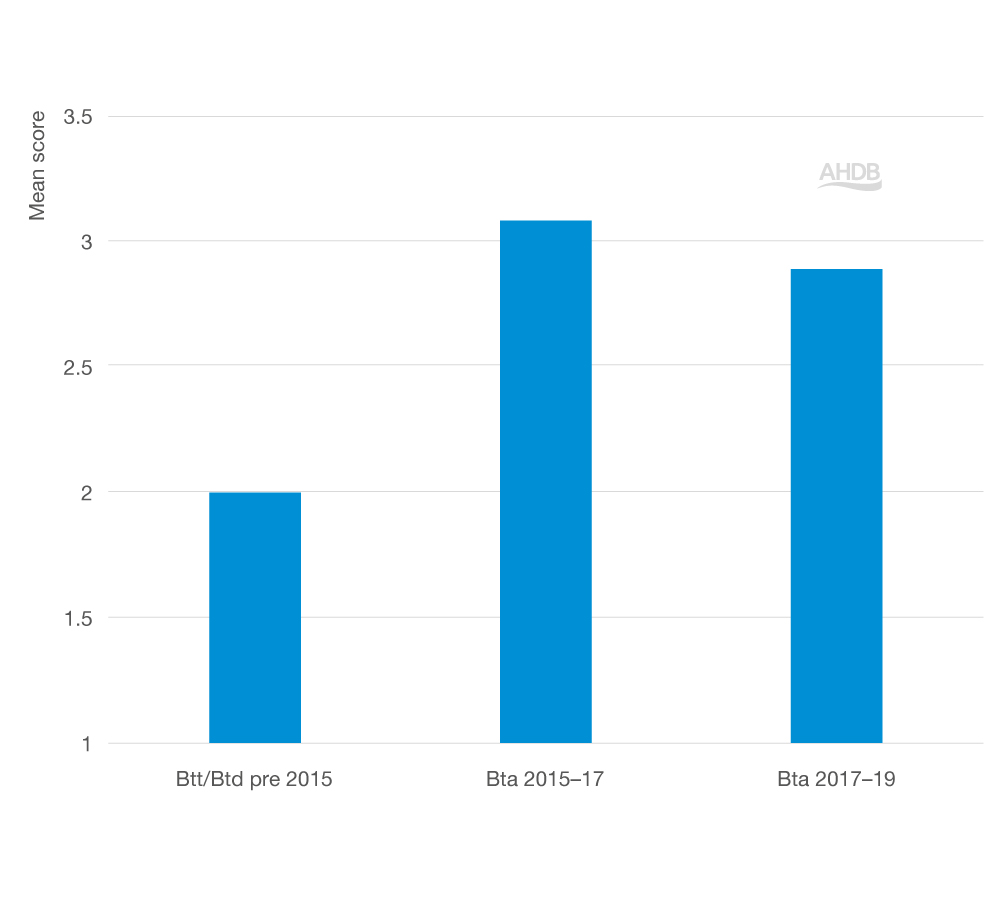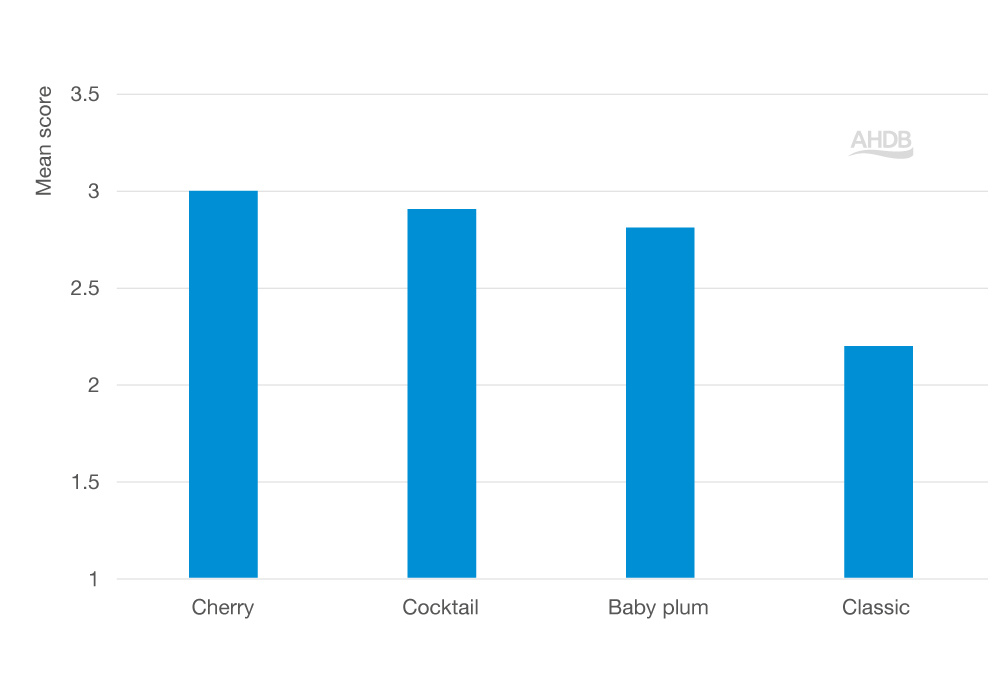Please click here to access the main AHDB website and other sectors.
- Home
- Knowledge library
- Pollination surveys of UK tomato production sites
Pollination surveys of UK tomato production sites
Surveys were carried out with tomato growers to examine their experience of using native bumblebees to pollinate their crop. Read on to learn about their opinions of the effectiveness of native bumblebees and the observed impact on their crops.
Preliminary survey in 2015
A preliminary survey of Tomato Growers’ Association (TGA) members at the end of the 2015 season indicated that 80% of respondents were ‘less than happy’ with Bta and rated their performance as only 60% of the non-native bumblebees.
Some of the 20% of growers who reported adequate pollination by Bta said this had only been achieved by using more hives than had been required with Btt or Btd.
These results prompted the TGA to instigate a more in-depth survey of UK tomato growers to gather more precise information about the situation.

An example of a commercial bumblebee hive in a tomato crop. © Dr R J Jacobson
Conclusions from an industry-wide survey in 2017
Growers representing 98% of the UK tomato production area participated in this survey. The following notes summarise their experiences and opinions:
- There was a general belief among growers that Bta were less vigorous than the previously used non-native subspecies and more likely to fail to provide adequate pollination should any aspect of flower development or ambient conditions be suboptimal for their performance. Seventy two per cent said they would prefer to return to using the non-native bumblebees
- No growers considered the performance of Bta to have surpassed Btt/Btd, with 28% saying Bta were poorer, 28% saying much poorer, and 9% saying very much poorer than Btt/Btd
- Due to reduced confidence in bumblebees, 75% of growers now devoted more labour to monitoring fruit set than when they were using non-native bumblebees
- Planned Bta hive input schedules varied between suppliers, sites, types/cultivars of tomatoes and length of growing season. Twenty-eight per cent of growers occasionally ordered extra Bta hives, while 69% said this was a usual or frequent requirement
- Forty-four per cent of growers linked poor Bta performance to hot conditions
- Forty-seven per cent of growers thought Bta colony life was shorter than they had come to expect from non-native bumblebees. Four growers reported improved results when they changed from fortnightly to weekly hive deliveries, which was thought to reduce peaks and troughs in bumblebee activity
- One grower believed that Bta workers forage very early in the morning. If correct, then their activity may not be very well synchronised to pollen release/flow in tomato flowers
- Twelve per cent of growers considered the condition of plants during hot weather to be a contributory factor
- All types of tomato were affected by poor set, but problems were most serious in the smaller fruiting cultivars which produce more flowers
- One grower said pollen did not flow freely in humid conditions and speculated that Btt/Btd could cope with this, but Bta could not
Read the report from the research project PE 031 - Tomato: An investigation into poor pollination performance by the native bumblebee, Bombus terretris audax for the full detail

An example of a commercial bumblebee hive in a tomato crop. © Dr R J Jacobson
Conclusions from an industry-wide survey in 2019
In 2019, the TGA TC repeated the 2017 survey to determine whether growers’ perception of Bta performance had changed during the interim period. The full results of the survey, which included all the growers questioned in 2017, are beyond the scope of this page, but the following extracts provide a useful update:
- The overall mean score of perceived performance of Bta by growers for three periods were: pre-2015 = 2.03, 2015 to 2017 = 3.16 and 2017–2019 = 2.96 (Figure 1)
- The slight improvement in perceived Bta performance in the 2017–2019 period may be attributed to improved Bta breeding stock and/or improved grower understanding of the in-crop management of Bta
- The breakdown of mean scores into different tomato types in 2019 showed Bta performance to be poorest on the cherry types: cherry (3) > cocktail (2.9) > baby plum (2.8) > classic (2.2) (Figure 2)
- It is worth noting here that the switch to Bta in 2015 coincided with a national move towards small fruiting cultivars marketed ‘on the vine’
Read the report from the research project PE 031b - Tomato: Phase 3 of an investigation into poor pollination performance by the native bumblebee, Bombus terrestris audax for the full detail
|
Impression of bumblebee performance |
Good
|
Good with occasional extra hives required |
Some extra hives usually required |
Extra hives frequently required and some manual pollination |
Poor fruit set despite action in category 4 and some financial loss |
|
Category/Score |
1 |
2 |
3 |
4 |
5 |

Figure 1. Growers' overall perception of Bta performance between 2017 and 2019

Figure 2. Mean of all grower scores for the main tomato types in 2019
Useful links
Got a question? Ask a member of the team
Author
The content on this page was authored for AHDB by Dr Rob Jacobson (Rob Jacobson Consultancy Ltd).

